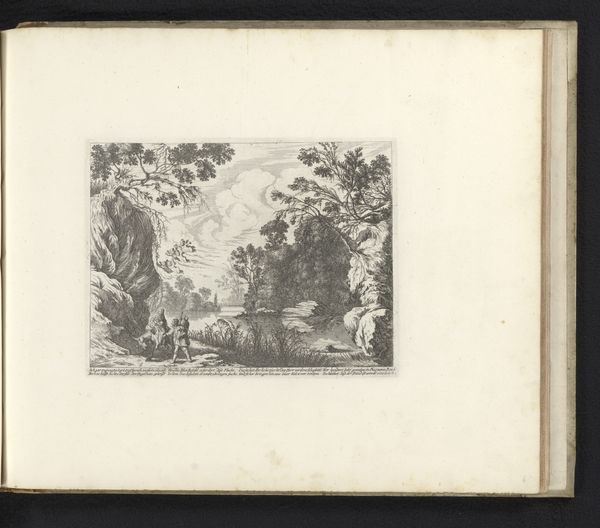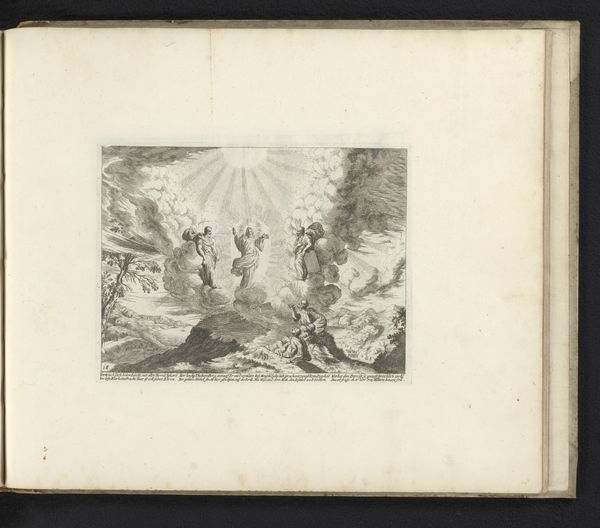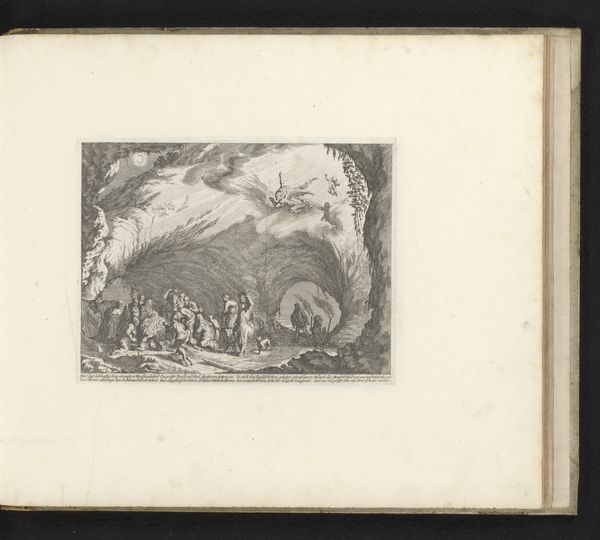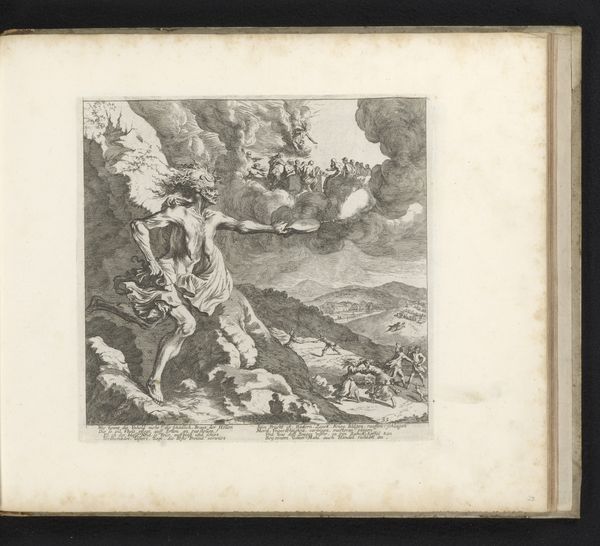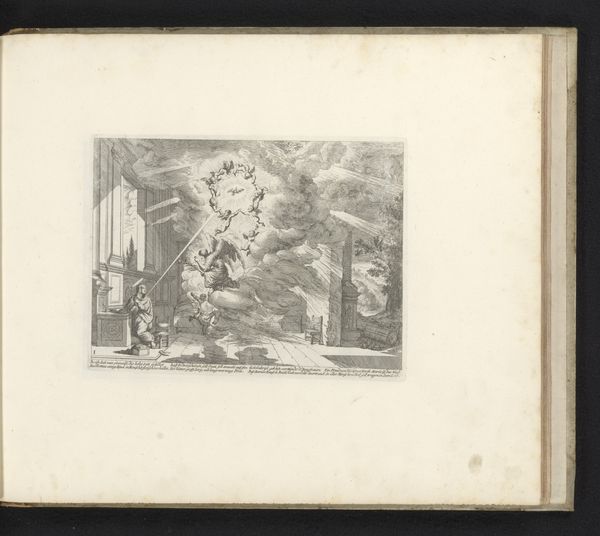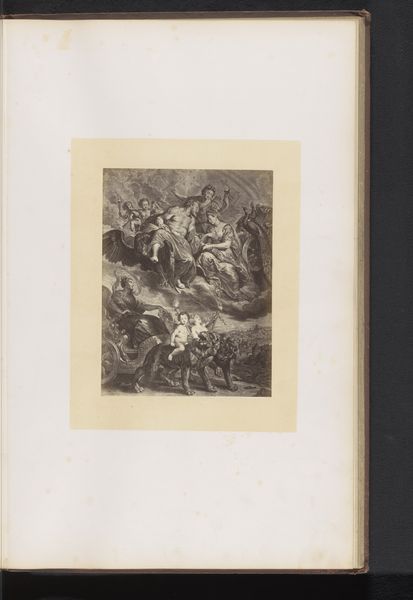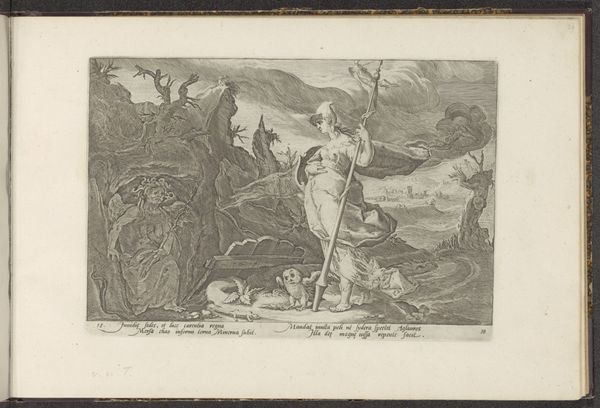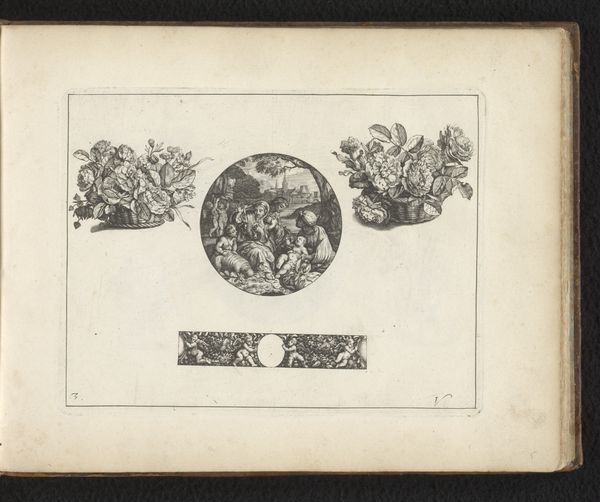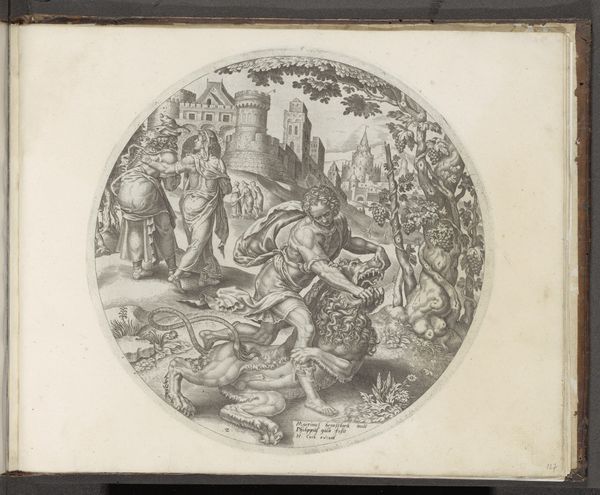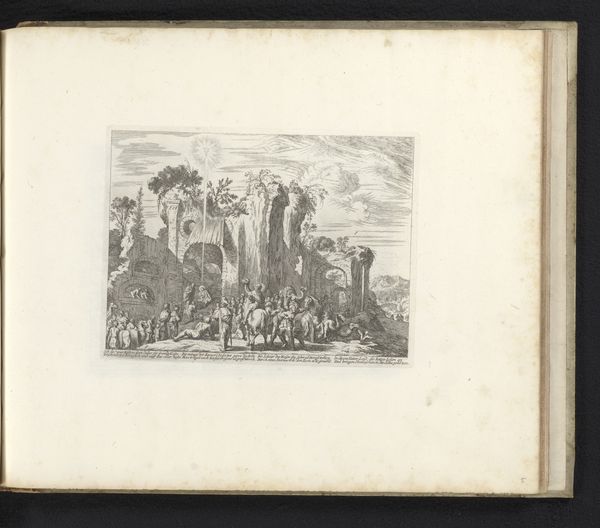
print, intaglio, paper, engraving
#
baroque
# print
#
intaglio
#
figuration
#
paper
#
line
#
history-painting
#
engraving
Dimensions: height 161 mm, width 206 mm
Copyright: Rijks Museum: Open Domain
Curator: This intriguing engraving is titled "Afdaling in het voorgeborchte," or "Descent into Limbo," made between 1670 and 1682 by Melchior Küsel. It's an intaglio print on paper currently held in the Rijksmuseum collection. Editor: My first impression is dramatic, even theatrical. The contrast between light and shadow is intense, creating a very unsettling atmosphere. It feels almost like a stage set. Curator: Indeed, the Baroque period leaned heavily into such theatricality. Let's delve into the iconography. The scene depicts Christ's descent into Limbo, rescuing righteous souls trapped before his resurrection. Notice how Küsel uses light not just to illuminate, but to differentiate between the saved and the damned. Editor: I see how the figures on the right, bathed in a brighter light, seem almost serene compared to the chaos on the left engulfed in flames. The devils overhead add another layer of dread, don't they? What kind of visual vocabulary was available at the time that would give meaning to those demons? Curator: Absolutely. Demons served as potent symbols of evil and temptation during that era. Their inclusion underscores the battle between good and evil central to the narrative, tapping into deeply ingrained cultural fears. These demons serve as representations of not just temptation, but our inner failings as mortal men. The smoke and ash seems to engulf figures from a variety of cultures - there are recognizable tropes of garb and posture throughout. Editor: Considering this was a print, intended for wider distribution, I wonder how audiences at the time perceived it. Was it simply a religious lesson, or did it also serve a political function, reinforcing the power of the church perhaps? Curator: I think it's less directly political and more aimed at moral instruction and emotional manipulation. By presenting such a stark vision of salvation and damnation, the print aimed to inspire piety and adherence to religious doctrine. But as a piece intended for broad consumption, of course we would expect there to be cultural interpretations we aren't aware of, or simply do not understand given the passage of time. Editor: It certainly gives one pause. Seeing how artists of the period used potent symbols to convey such strong emotions and messages…it makes me think about the responsibilities that come with creating and sharing imagery even today. Curator: I agree. It reminds us that images, regardless of medium, carry immense cultural and psychological weight that echoes through time. The Descent into Limbo reveals that continuity in our concerns around morality, faith, and justice.
Comments
No comments
Be the first to comment and join the conversation on the ultimate creative platform.

